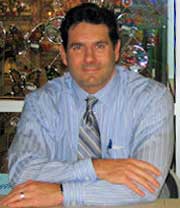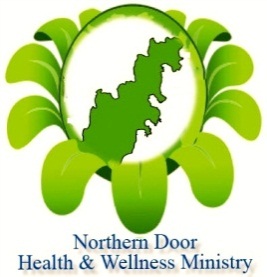On two Saturdays, November 5 and 12, Dr. Melissa Nelson provides opportunities for interested members of the Door Community to meet, learn and experience workshop training in the Art of Healing Touch from 9 am – 4 pm studying with indigenous Grandmother Tassie at the Nelson Healing Center in Sturgeon Bay.
“In May, I assisted in healing at the 9th annual meeting of the International Council of Thirteen Indigenous Grandmothers,” says Dr. Nelson. “I was blessed to work with Grandmother Tassie as one of the healers on staff. She is known and highly respected throughout the Pacific Northwest as a wise elder and indigenous healer.”

Russian postcard based on a photo taken in 1908 by S. I. Borisov, showing a female shaman, of probable Khakas ethnicity.
The techniques of healing touch can be learned and understood by combining lessons in theory with the actual practice of treatment. In these classes, participants will first learn to read the human energy field and then experience “hands on” demonstrations and training in the Native American traditions of energy medicine.
“We are very blessed to have Grandmother Tassie coming to the Nelson Healing Center to provide these teachings and healing to our community,” says Melissa.
“All peoples have methods for hands-on therapy, what we now call bodywork,” says Lewis Mehl-Madrona, MD, graduate of Stanford University School of Medicine and trained in family medicine, psychiatry, and clinical psychology. “The Cherokee people of North America, for example, were well versed in body therapies and energy healing. They developed a comprehensive, sophisticated bodywork system that encompassed a form of osteopathic massage and manipulation, breath, and energy work. Central to this technique are the alternation of deep pressure and gentle rocking release. They were also familiar with acupuncture meridians and used acupuncture, with needles made of thorns or porcupine quills.”
“The Swimmer Manuscript: Cherokee Sacred Formulas and Medicinal Prescriptions,” by James Mooney found in the Smithsonian Institute, speaks on the use of acupuncture by, “primitive savages, when every civilized person would know that the proper treatment is bleeding with leeches.”
While some people complain that little has been done to recognize Native healing practices, here in Wisconsin, healing touch is recognized by the UW Health’s Integrative Medicine department, recently highlighted at the UW Carbone Cancer Center’s 10th annual professional education conference in a program called “The ABC’s of Healing Touch: An Energetic Approach to Compassionate Care.”
In “Honoring the Medicine: The Essential Guide to Native American Healing,” author Ken Cohen explains, “Massage, healing touch and noncontact healing are practiced by Native healers throughout North and South America. Often the hands are used to sweep away or remove spiritual intrusions or to brush in healing powers. Cherokees warm their hands over coals and circle their palms either on or above an affected area. Some healers hold their hands to the front and back of an affected area, creating what they now call ‘electrodes within the body.’ The healer imagines that electricity is moving from one hand to the other. Sometimes the muscles are rubbed in a manner similar to Western massage. To increase the healing effect, the medicine person massages specific therapeutic points.”
Dr. Mehl-Madrona says, “The Zuni pueblo in New Mexico practice a technique very similar to the high-velocity adjustment of the neck and spine popularized as chiropractic. The Hopi people and their practices were the source of inspiration for a type of massage now called Hakomi. Native American practices, in which hot and cold stones are used to deeply penetrate muscles and tissues to reduce pain and inflammation, are what we now know as stone massage. All of these practices integrate physical, emotional, psychological, and spiritual aspects of a person.”
“Discussion exists among Native American scholars as to whether A.J. Still, the father of American osteopathic medicine, who was also the physician for the Shawnee Nation for more than 20 years, lifted much of what became osteopathic medicine or chiropractic from Shawnee healing practices,” adds Lewis Mehl-Madrona, MD. “According to this theory, Still took the techniques of Shawnee bodywork and rendered them mechanical as fitted the European paradigm of the day (Shawnee concepts were decidedly more energetic and spiritual). He marketed these techniques and developed the first colleges of osteopathy in the United States.”
Lewis Mehl-Madrona, MD, is the author of Coyote Medicine, Coyote Healing, and Coyote Wisdom, a trilogy of books on what Native culture has to offer the modern world. He is also of Cherokee and Lakota heritage.
Workshop training in the “Art of Healing Touch” with First Nations Elder and Healer, Grandmother Tassie at the Nelson Healing Center is available on either Saturday, November 5 or 12 and takes place from 9 am – 4 pm. The cost is $65 per day (lunch included). Please call 920.818.0045 with questions or to register.
The Nelson Healing Center is located at 44 S. 2nd Avenue in Sturgeon Bay. You can find out about other classes and learning opportunities online.




